Vichy Enchères vous invite à découvrir un remarquable alto de Giovanni Francesco Pressenda. Une véritable rareté sur le marché de l’art, puisque sur les 95 instruments de Pressenda vendus aux enchères depuis 1998, seuls neuf étaient des altos. Cet instrument nous donne ainsi l’occasion de revenir sur l’importance de l’œuvre de Giovanni Francesco Pressenda, le père de l’école moderne de lutherie de Turin, et de mettre en lumière ses relations avec les luthiers français.
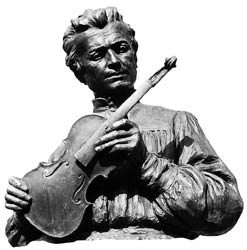
Giovanni Francesco Pressenda est le luthier piémontais par excellence et, pour beaucoup, le meilleur luthier italien du XIXème siècle. Son travail donna naissance à l’école moderne de lutherie de Turin et fut copié et imité par plusieurs générations de luthiers jusqu’à aujourd’hui.
Plus encore que Guadagnini qui adopta la ville seulement au cours de la dernière période de sa vie, Pressenda marqua la lutherie de la région en élaborant un style typiquement piémontais, dont la diffusion dépassa rapidement les simples frontières régionales. Le Piémont domina toutes les autres régions dans le domaine de la lutherie italienne moderne et, depuis le début du XIXe siècle jusqu’à aujourd’hui, produisit des luthiers de premier ordre, dont les meilleurs furent probablement Pressenda et son élève Rocca. Il faut dire qu’à cette époque, la situation politique, économique et culturelle de la ville de Turin favorisait le développement de la scène musicale en attirant musiciens et luthiers.
Pressenda fut de ceux-là puisqu’il déménagea à Turin vers 1817-18[1], à l’âge de quarante ans. Né le 6 janvier 1777 à Lequio-Berria, dans le Piémont, il fut d’abord exploitant agricole près d’Alba et probablement à Carmagnola. Comment en est-il arrivé à la lutherie ? Cela est assez flou, mais il est probable qu’il ait d’abord été violoniste amateur. Il est difficile de reconstituer son parcours professionnel, car les archives de cette période sont rares, mais il pourrait avoir été formé par Alexandre d’Espine. On sait, en revanche, qu’il travailla dans un premier temps dans l’atelier de Lété-Pillement, comme le prouve une étiquette d’instrument rédigée par Pressenda, mentionnant qu’il a révisé et corrigé l’instrument sous la supervision de Lété[2]. Suite à ce travail chez Lété-Pillement, il s’établit à son compte au n°30 Contrada d’Angennes, où il produisit une série d’instruments de grande qualité qui rencontrèrent un succès quasi immédiat – un phénomène rare pour l’époque.
[1]Umberto Azzolina, Liuteria Italiana dell’ottocento e del novecento, Italian violin making in the eighteen and nineteen hundreds, 1989, editrice Turris Cremona
[2] Eric Blot, Liuteria Italiana 1800 – 1950, 150 anni di liuteria, 150 years of violinmaking in Piemonte, Piedmont, Vol IV, Eric Blot Edizioni, 2001, p60
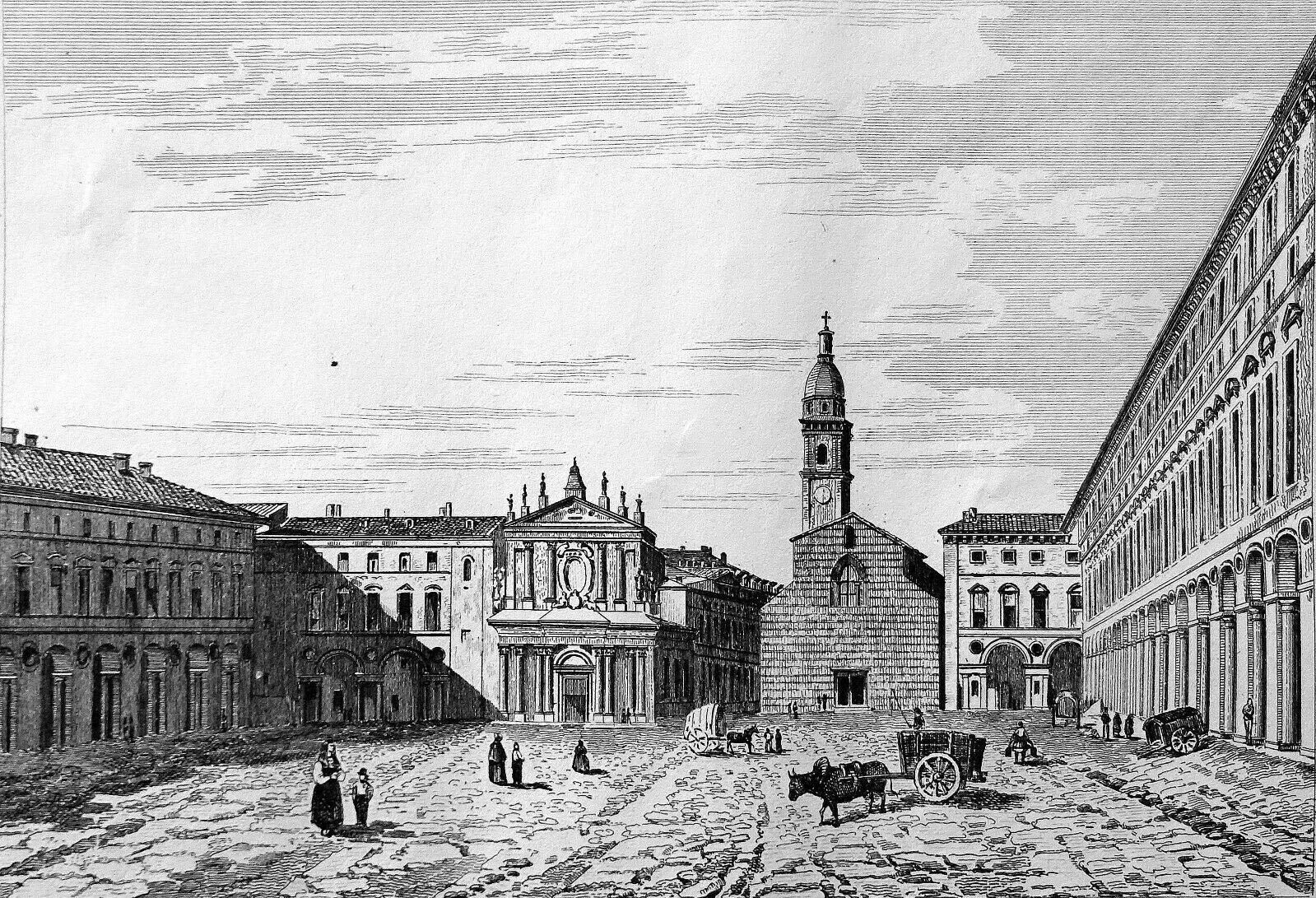
Sa renommée doit beaucoup à l’arrivée à Turin, en 1823, du compositeur Giovanni Battista Polledro (1781-1853), premier violon de la Chapelle Royale (Cappella Regia) de Carlo Felice à Turin, puis directeur de l’Orchestre du Teatro Regio jusqu’en 1844. Celui-ci montra beaucoup d’intérêt pour le travail de Pressenda et devint un véritable soutien pour le luthier, ce qui lui permit de se faire connaître des musiciens, de baigner dans ce milieu et de jouir d’une position confortable. Le successeur de Polledro, Giuseppe Ghebart (1796-1870) – violoniste, chef d’orchestre et compositeur -, devint également l’un de ses mentors. Le soutien de ces deux grands musiciens fut déterminant puisque Pressenda devint rapidement le luthier le plus apprécié de Turin. Durant leur séjour à Turin, Polledro et Ghebart résidaient au n° 8 de la Contrada delle Rosine, à deux pas de l’atelier de Pressanda. Ils furent très certainement ses principaux clients et orientèrent un grand nombre de musiciens vers lui pour la réalisation et la fabrication d’instruments[1]. Le catalogue d’exposition de Turin de 1844 à laquelle participait Pressenda, rend compte du succès du luthier auprès des musiciens, et tout particulièrement de l’admiration de Ghebard :
[1] Informations puisées dans Eric Blot, Liuteria Italiana 1800 – 1950, 150 anni di liuteria, 150 years of violinmaking in Piemonte, Piedmont, Vol IV, Eric Blot Edizioni, 2001
“Our talented professor Ghebard has in his possession some violins of Pressenda, which he would hardly exchange for even the most perfect Stradivarius”
Eric Blot, Liuteria Italiana 1800 – 1950, 150 anni di liuteria, 150 years of violinmaking in Piemonte, Piedmont, Vol IV, Eric Blot Edizioni, 2001, p64-65
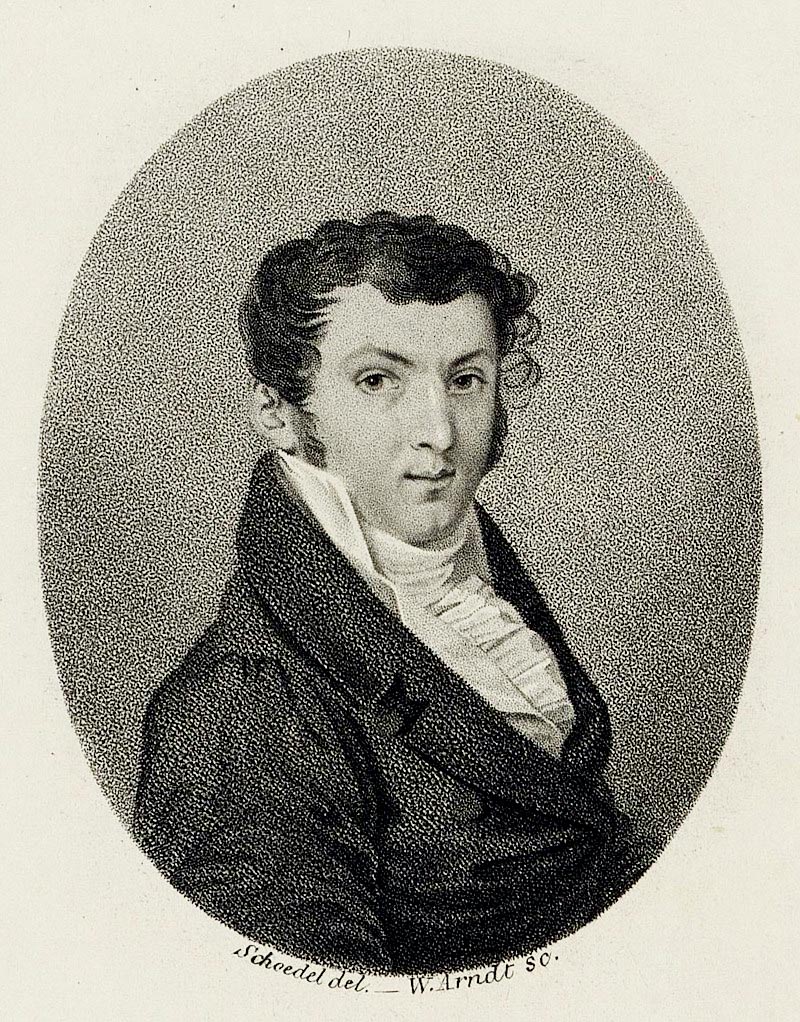
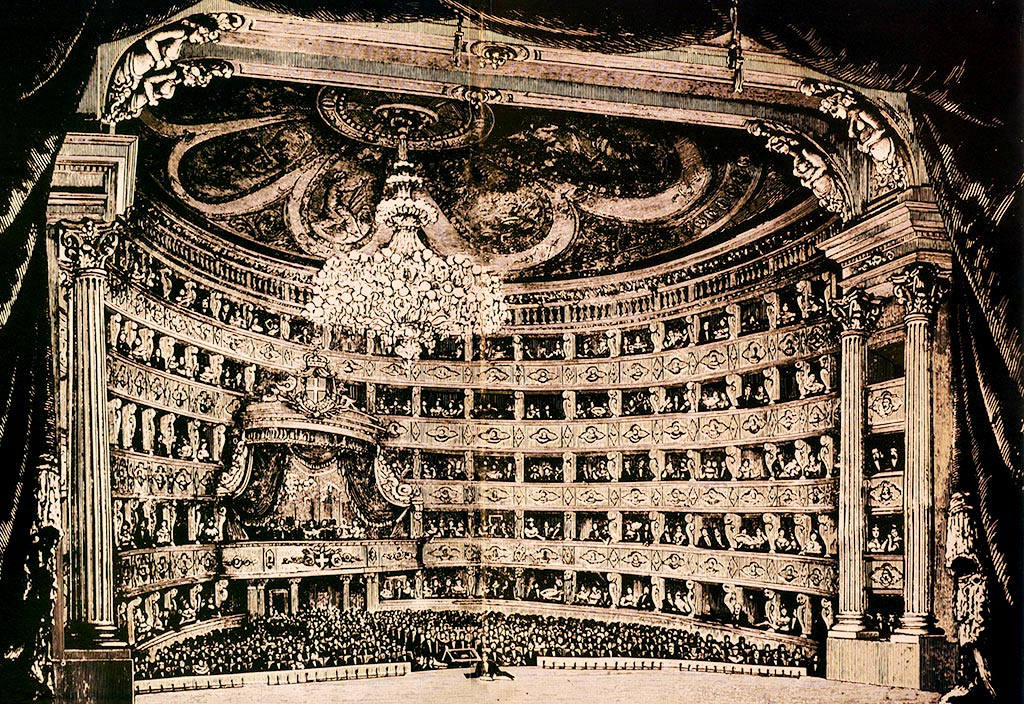
Les instruments de Pressenda furent très vite reconnus et le luthier remporta de multiples récompenses. Lors de sa première participation à l’exposition de Turin organisée au château du Valentino en 1829, il reçut une médaille de bronze pour son travail remarquable, tant par la qualité de ses instruments que par l’étendue de son savoir-faire. Lorsqu’il se représenta en 1832, la médaille de bronze qui lui avait été décernée lors de l’édition précédente lui fut à nouveau remise, et ce avec encore plus d’enthousiasme, puisque ses instruments furent, pour la première fois, comparés à ceux des maîtres crémonais – considérés comme la référence absolue.
“[he] exhibited a violin and a cello with an interesting oil varnish following in the tradition of the classical instruments of Cremona. The Regia Camera declares Francesco Pressenda to be even more deserving of the bronze medal he was awarded in 1829 for his excellent work and the renowned fine quality of his instruments.”
Eric Blot, Liuteria Italiana 1800 – 1950, 150 anni di liuteria, 150 years of violinmaking in Piemonte, Piedmont, Vol IV, Eric Blot Edizioni, 2001, p64
A l’occasion de l’exposition de Turin de 1838, il présenta deux violons et un alto et décrocha la médaille d’argent. Le commentaire qui accompagnait la récompense confirmait la réputation de Pressenda en Italie et à l’étranger, et le présentait comme un digne héritier des Crémonais :
“For the solid reputation that Gian Francesco Pressenda so deservedly acquired at home and abroad, as heir to the skill of the ancient Cremonese craftsmen in string instrument making, and for the fine quality of the instruments he has exhibited, The Camera Regia thus awards him with a silver medal.”
Eric Blot, Liuteria Italiana 1800 – 1950, 150 anni di liuteria, 150 years of violinmaking in Piemonte, Piedmont, Vol IV, Eric Blot Edizioni, 2001, p64
Lors des deux dernières expositions auxquelles il participa, celles de 1844 et 1850, il obtint respectivement la médaille d’argent et le médaille d’argent dorée. En tout, Pressenda participa ainsi aux expositions de Turin de 1829, 1832, 1838, 1844 et 1850, et fut à chaque fois récompensé par des médailles de plus en plus honorables.
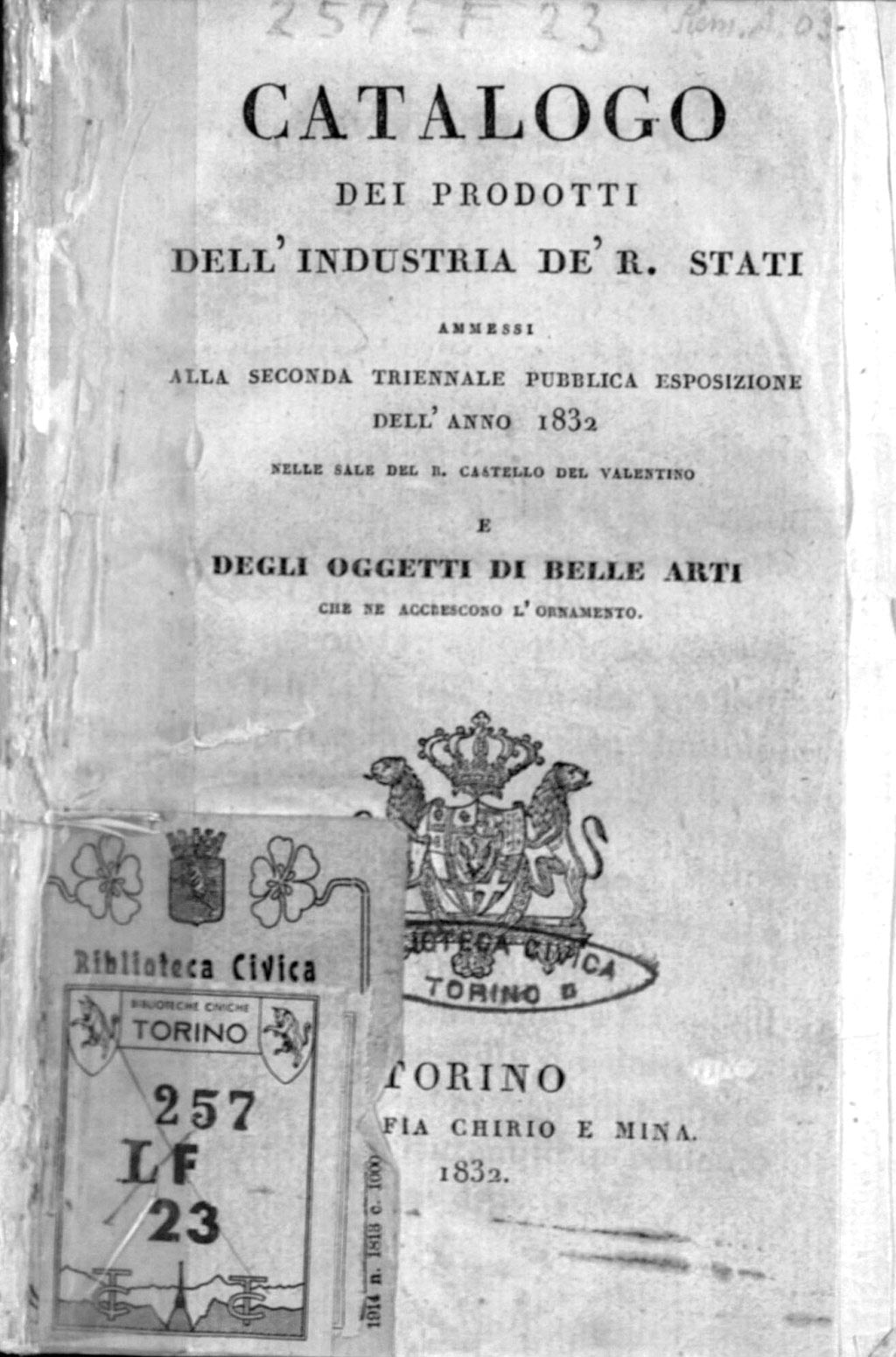
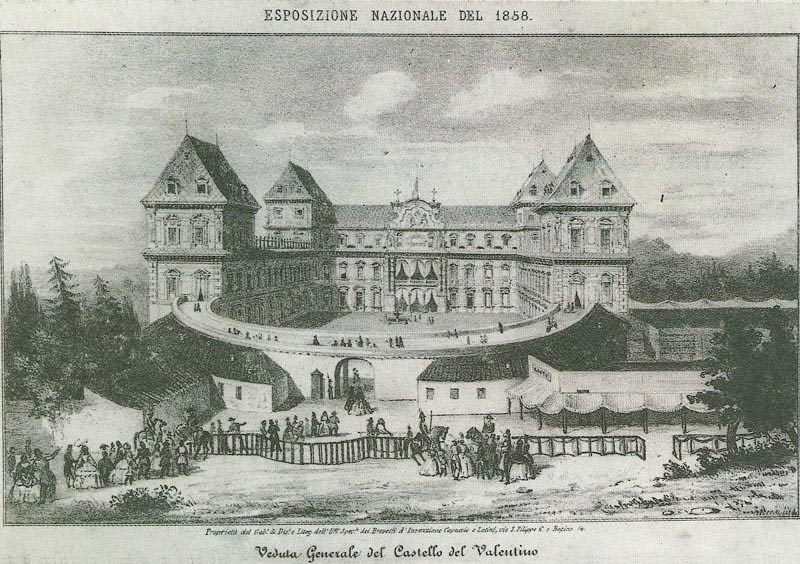
Si Pressenda est considéré comme le père de la lutherie moderne de Turin, c’est qu’il mit au point un modèle d’instrument typique de la ville. Le modèle Pressenda s’inspire de ceux de Stradivari et Guarneri del Gesù, tout en proposant une forme nouvelle reflétant sa conception de l’instrument parfait. Le modello Pressenda est ainsi très personnel et se singularise par ses formes pleines et nettes, qui ne tombent jamais dans la lourdeur – voyez la puissante et élégante volute de l’alto de la vente du 2 juin 2022 -, et par des choix de bois de grande beauté et d’excellente qualité acoustique. Vers la fin de l’année 1834, Pressenda engagea Giuseppa Rocca, qui allait devenir son plus brillant apprenti et digne successeur. Rocca reprit ce modèle, si bien que certains de ses instruments sont pratiquement identiques à ceux du maître.
Néanmoins, l’un des luthiers les plus influencés par le modèle Pressenda fut probablement Annibale Fagnola (1866-1939), qui en réalisa plusieurs belles copies après son installation à Turin en 1894. Ces dernières années, plusieurs instruments de Fagnola ont été vendus à Vichy Enchères, à l’instar d’un beau violon réalisé en 1922 d’après un modèle Pressenda. A l’intérieur de l’instrument se trouvait d’ailleurs un facsimile de l’étiquette du maître…
Le modello Pressenda fut repris par des générations de luthiers à sa suite et continue aujourd’hui de séduire les musiciens et luthiers à travers le monde. Lors de la vente du 2 juin 2022, deux autres instruments de luthiers de Turin donneront un aperçu de cette école : un violon d’Enrico Melegari de 1891 et un autre d’Enrico Marchetti de 1917.
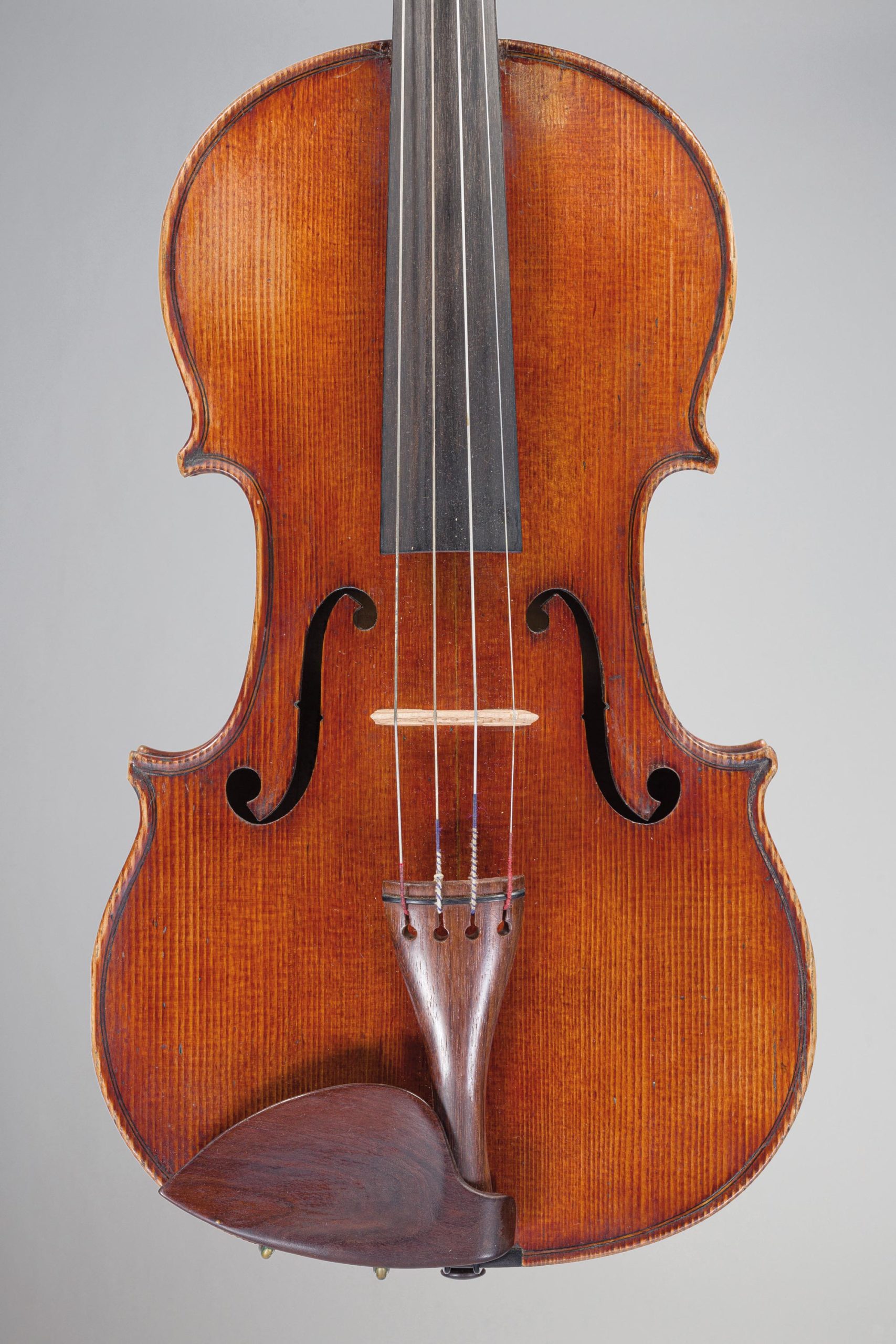
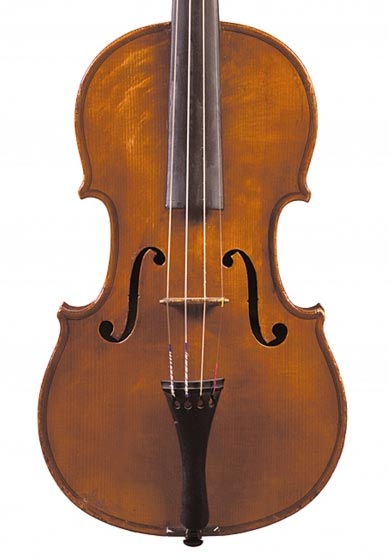
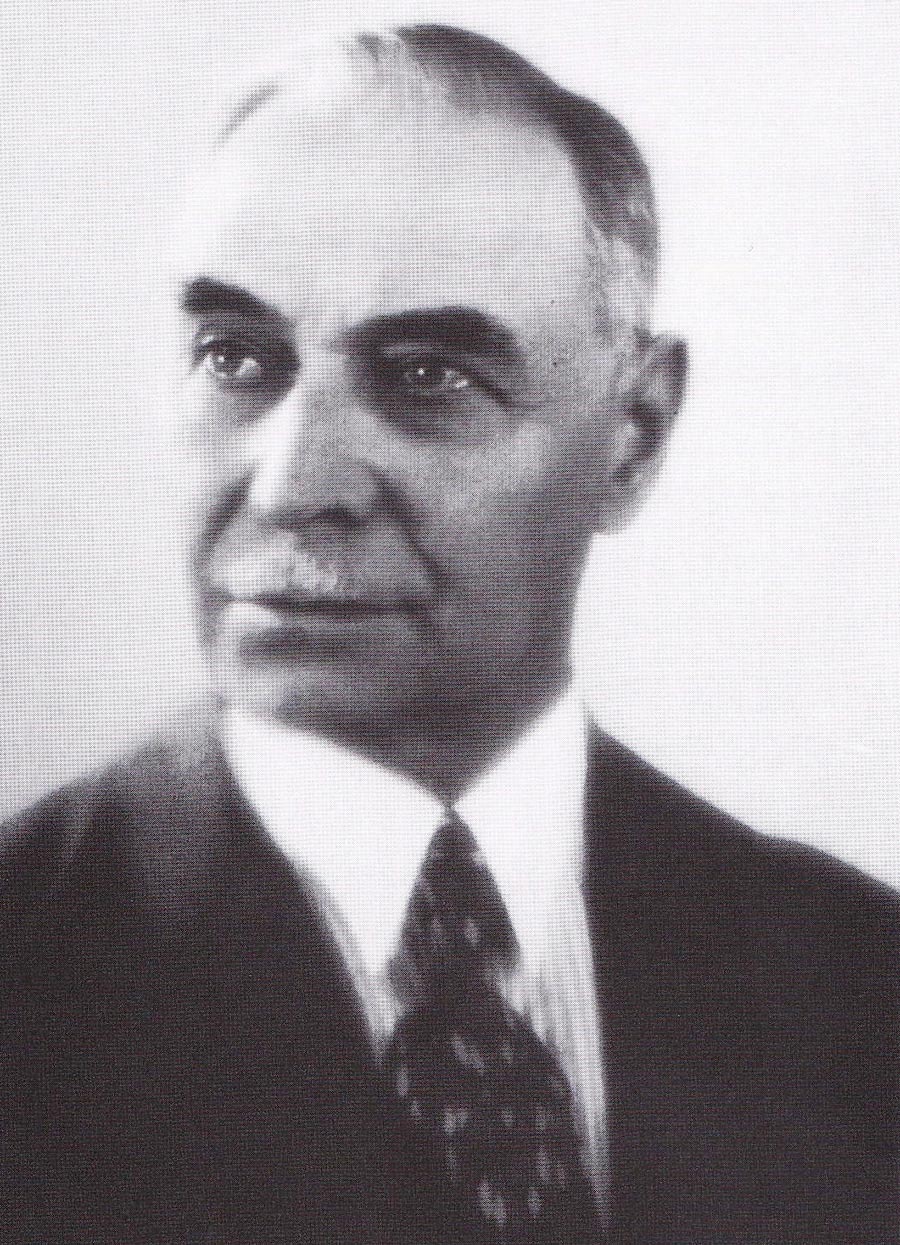

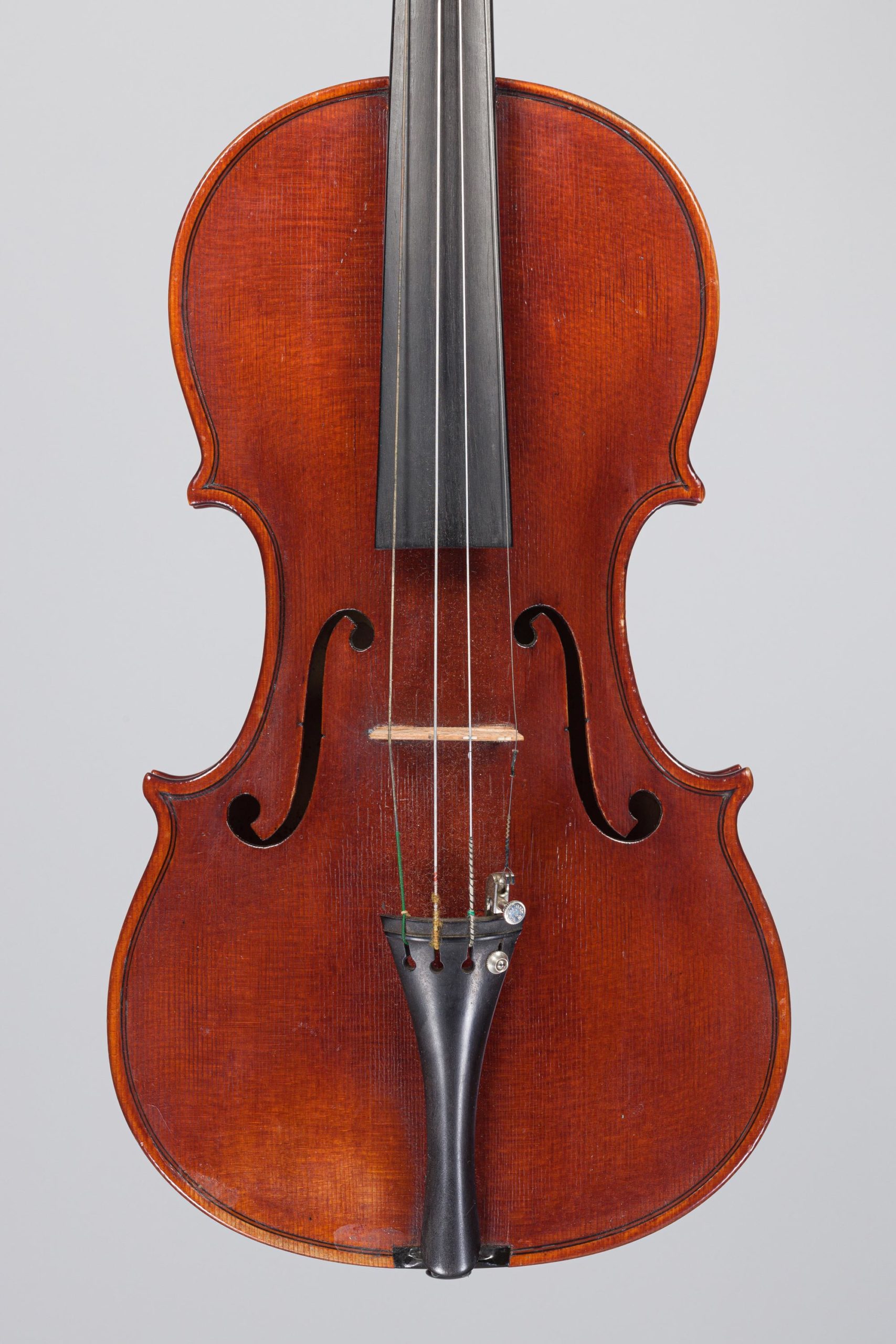
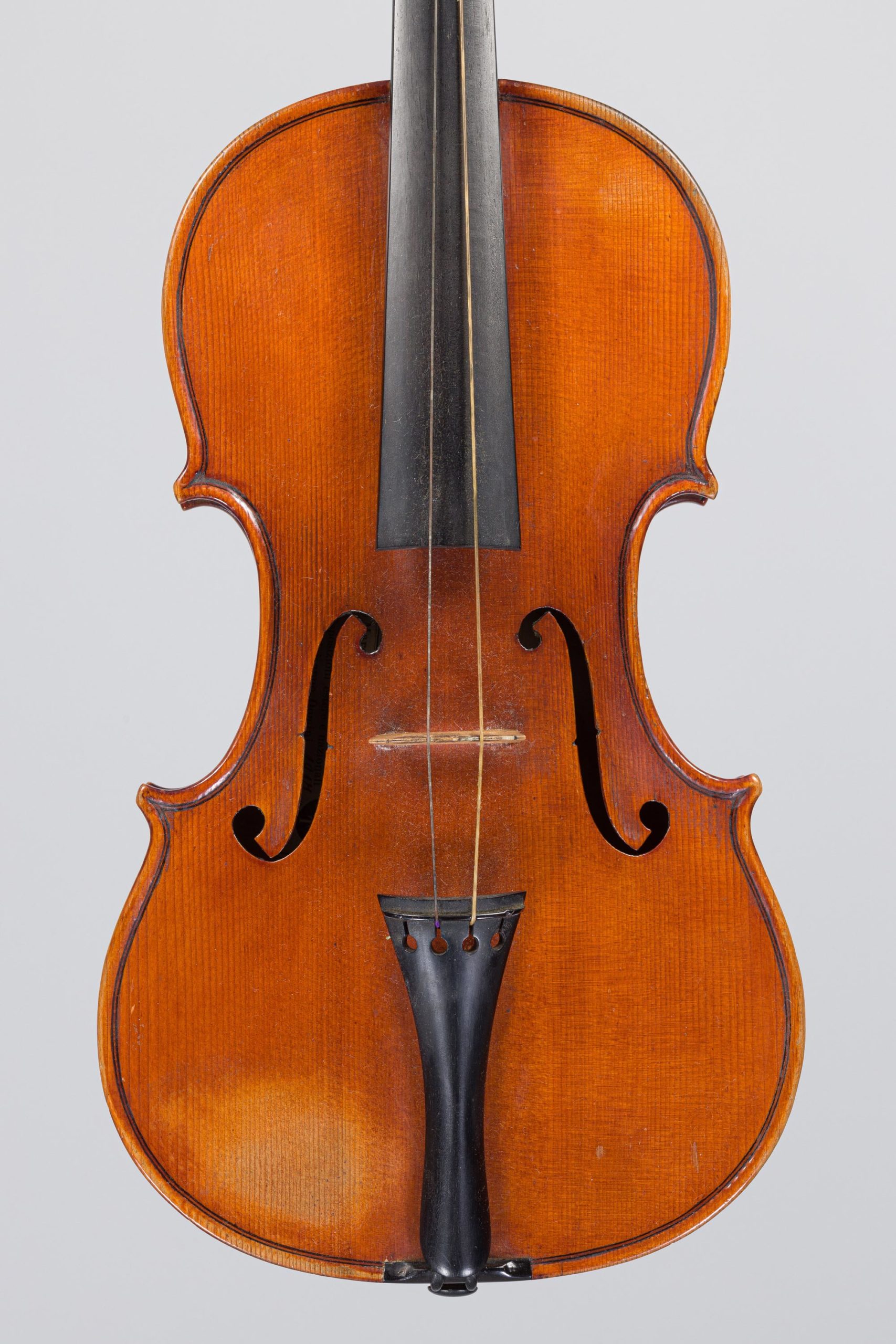
Bien que l’on ne connaisse que peu de choses sur la vie de Giovanni Francesco Pressenda, certaines facettes de sa personnalité transparaissent à travers ses instruments – et principalement à la lecture de ses étiquettes puisqu’un élément annoté sur celles-ci le singularise. En effet, Pressenda utilisait deux types d’étiquettes qui diffèrent par leur ornementation graphique mais conservent le même texte latin : “Joannes Franciscus Pressenda q. Raphael / fecit Taurini anno Domini 18xx”. La mention “q. Raphael” signifie “quondam Raphaelis”, c’est-à-dire “fils de feu Raphael”. Cette formulation était utilisée pour la rédaction de documents publics ou d’actes officiels, mais était inhabituelle pour les étiquettes d’instruments[1]. Dès lors, ces étiquettes semblent traduire l’importance que pouvait avoir le père de Pressenda dans sa vie personnelle et professionnelle, puisqu’il s’agit d’un hommage inhabituel qui conduit à s’interroger sur l’activité du père. Raphael Pressenda était-il également luthier et son nom parlait-il aux musiciens de l’époque ? Selon les quelques documents d’archives, celui-ci aurait en effet été impliqué dans la vie musicale de son temps, en tant que violoniste populaire. C’est probablement en voyant son père jouer du violon – et peut-être également en réviser quelques-uns – que Pressenda s’intéressa à l’instrument et à la lutherie.
[1] Eric Blot, Liuteria Italiana 1800 – 1950, 150 anni di liuteria, 150 years of violinmaking in Piemonte, Piedmont, Vol IV, Eric Blot Edizioni, 2001
Autre hypothèse, G. F. Pressenda mentionnait le nom de son père sur ses étiquettes pour s’inscrire fictivement dans une tradition familiale de lutherie afin de donner de la profondeur historique à ses instruments. Toujours est-il que la mention de son père sur ses étiquettes est assez inhabituelle et témoigne d’une certaine dévotion filiale.
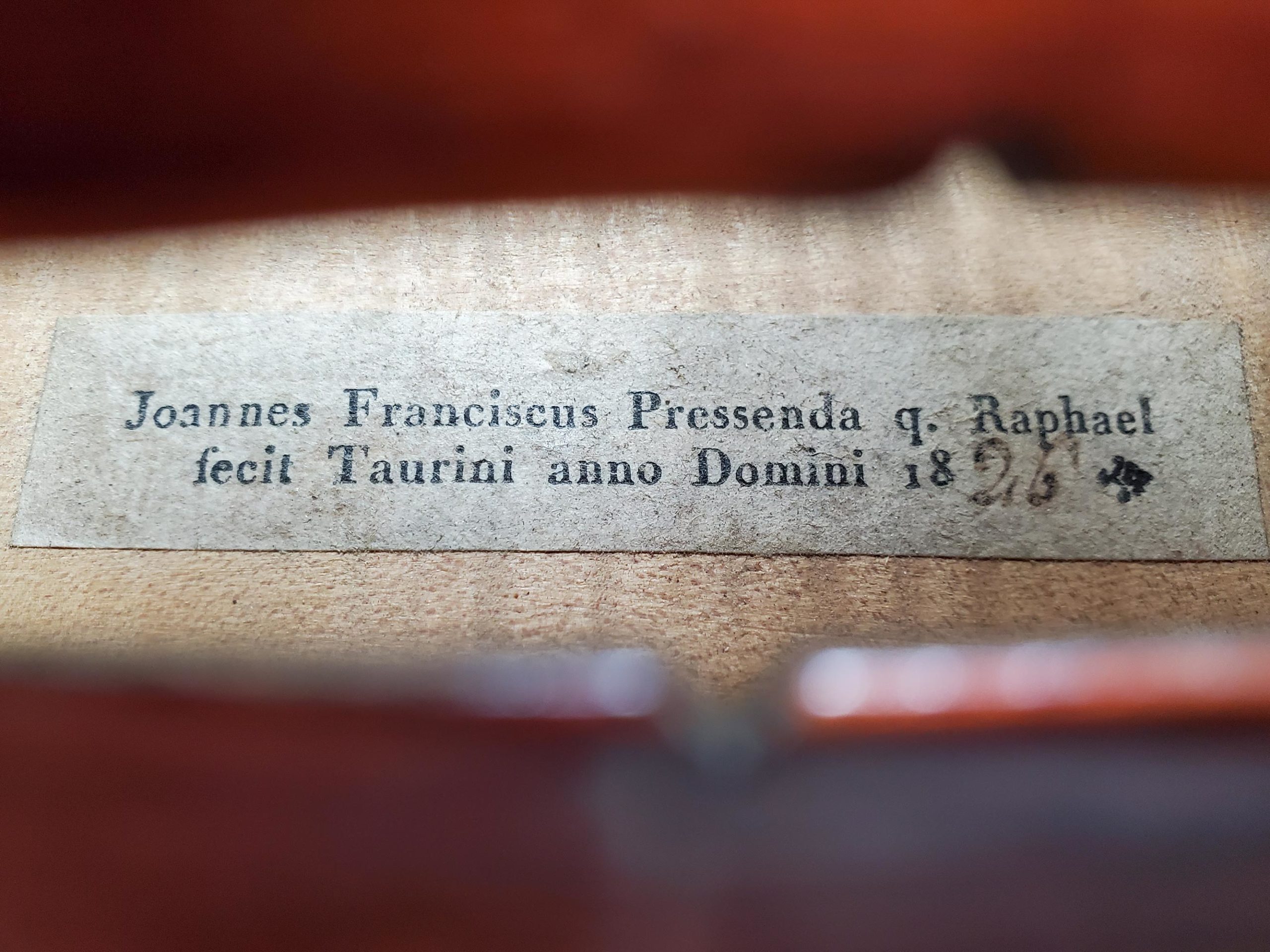
Durant la première partie de sa carrière, Pressenda fut influencé par la lutherie française, ce qui s’explique notamment par son travail dans l’atelier turinois de Lété-Pillement – ces deux familles de luthiers mirecurtiens. Au sein de l’atelier, Pressenda apprit les méthodes de construction françaises et s’imprégna de la forme en vogue en France. Il utilisa notamment le moule intérieur de type français et non crémonais[1]. Chez Lété-Pillement, il participa à la construction de guitares, d’orgues et de violons et apprit de ses collègues français les techniques utilisées à Mirecourt à cette époque, qui se refléteront plus tard dans ses propres instruments[2] – comme en témoigne l’alto de la vente du 2 juin 2022. Cet instrument est d’inspiration mirecurtienne dans l’interprétation du modèle Stradivari, dans la conception des voûtes carrées et dans l’aspect du vernis. En outre, comme nous le rappellent les experts Jonathan Marolle et Jean-Jacques Rampal, le sillet du bas est incrusté dans l’éclisse, ce qui est typique de ce qui se faisait à Mirecourt à cette époque.
Par la suite, Pressenda collabora avec plusieurs autres luthiers originaires de Mirecourt, tels que Joseph Calot et Pierre Pacherel. Ces derniers l’aidèrent certainement à réaliser des parties d’instruments, comme les volutes ou les ff. Plus que des collaborateurs, Calot et Pacherel étaient de véritables amis pour Pressenda, qui fut nommé parrain de la fille de Calot en 1827 et garçon d’honneur au mariage de Pacherel en 1829 – à côté de Léopold Noiriel, probablement un autre de ses collaborateurs[3]. Dans sa forme et la répartition de ses volumes, l’alto de Pressenda est effectivement proche du travail de ces maîtres français.
[1] Eric Blot, Liuteria Italiana 1800 – 1950, 150 anni di liuteria, 150 years of violinmaking in Piemonte, Piedmont, Vol IV, Eric Blot Edizioni, 2001
[2] Ibid
[3] Ibid
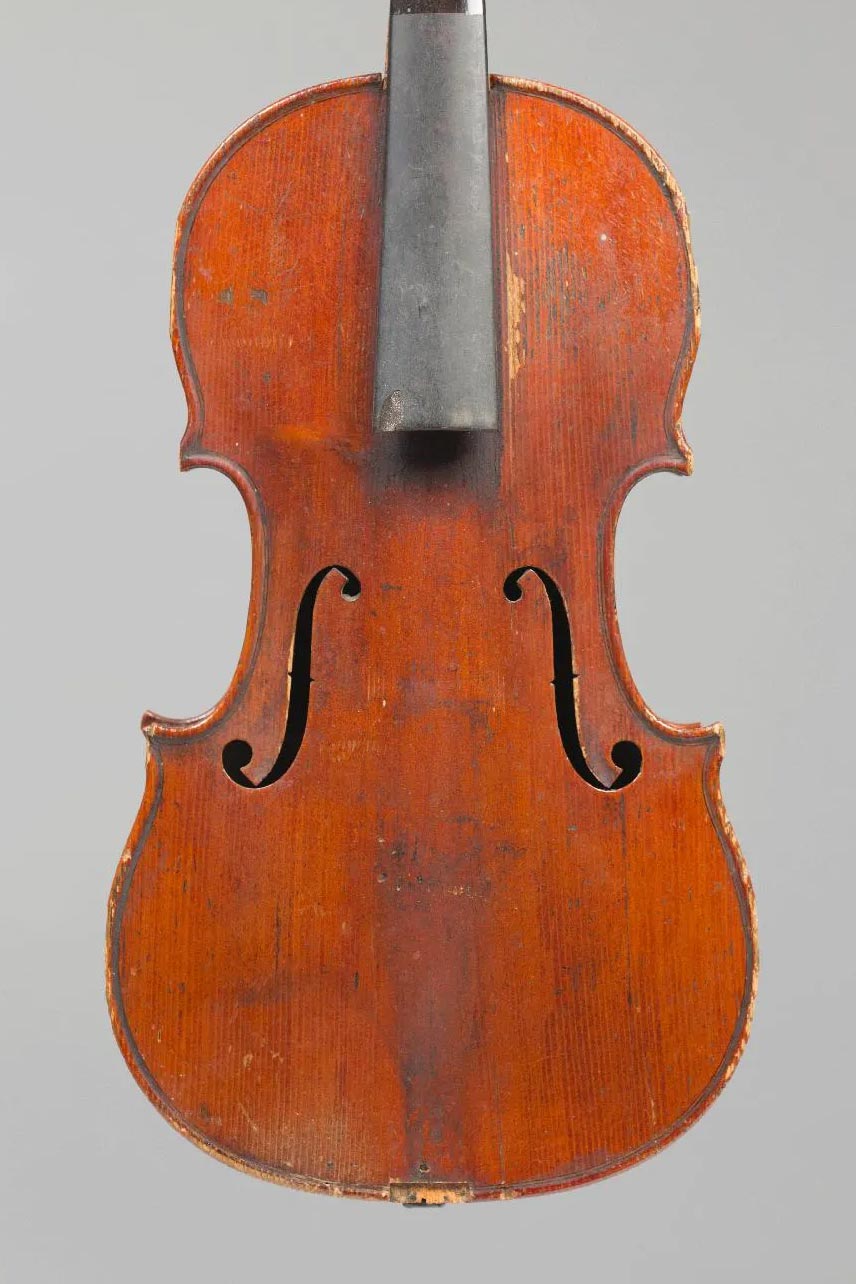
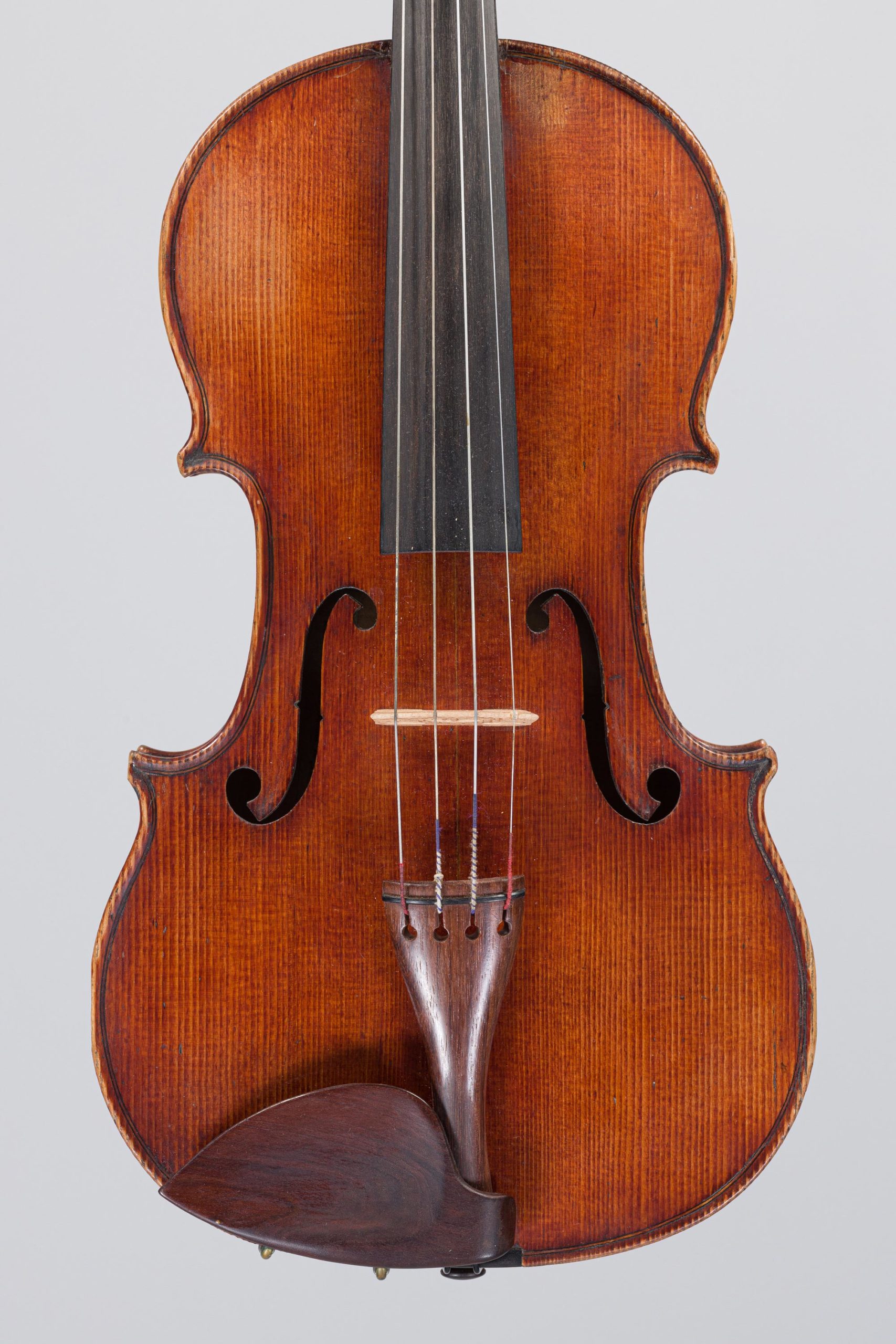

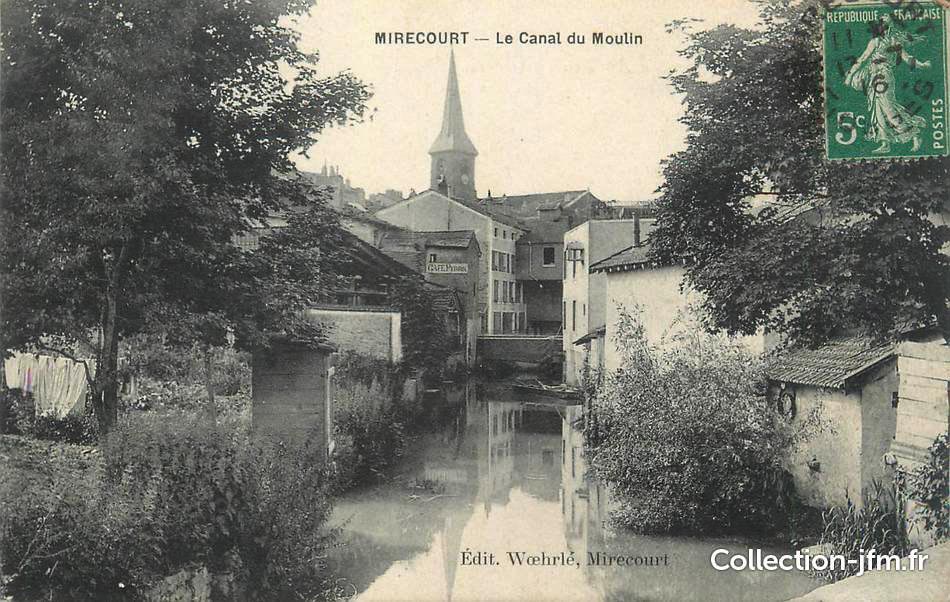
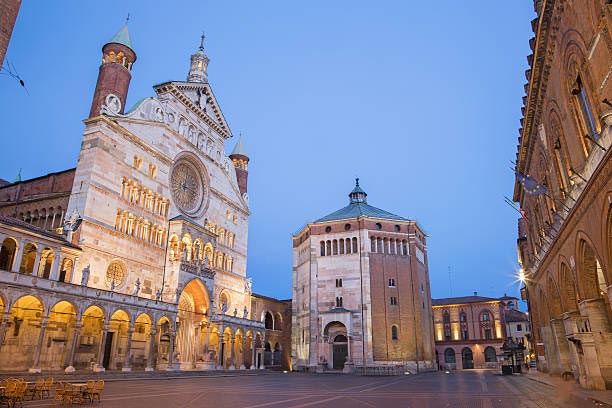
Pressenda atteint sa première période de maturité vers 1825-1826, au moment de la réalisation de cet alto. Le style de cette période conjugue des influences françaises et italiennes et ses instruments offrent ainsi un parfait équilibre entre ces deux écoles. L’œuvre de Pressenda se distingue ainsi de la quasi-totalité des écoles italiennes de l’époque, d’autant plus que le Piémont n’avait pas de véritable tradition locale de lutherie. Du côté italien, les instruments de Pressenda s’inspirent étroitement de Stradivari et de Guarneri, mais sans en être des copies conformes. Les silhouettes sont plus masculines et larges, avec des épaules plus rondes et une cambrure plus marquée, notamment au niveau du chevalet.
L’alto de la vente du 2 juin 2022 est influencé par le modèle Stradivari et l’ensemble a été exécuté avec une rare harmonie dans les proportions, de sorte que l’instrument témoigne d’un remarquable mélange de force et de grâce. En mettant au point ce nouveau modèle, Pressenda définit les bases de son style. Il conservera toute sa vie une certaine liberté et originalité en restant éloigné des diktats propres à une école. Cet alto rend également compte de son sens aigu du détail et de son savoir-faire raffiné et accompli. Chargé d’une forte personnalité, l’instrument est typique des premières années du maître.
Intéressant y compris du point de vue acoustique, c’est certainement ce type d’instrument qui séduisit les grands musiciens de l’époque, à l’instar de Polledro et Ghebart, ses mentors. Notons aussi que Pressenda était très exigeant dans le choix de ses bois et qu’il fut probablement approvisionné par des marchands français, tels que de Thiriot[1]. En outre, ses instruments se distinguent par leurs filets, généralement en ébène, joliment incrustés et à cannelures profondes et bien définies. Au niveau de la tête, les volutes sont profondément creusées, avec des bords noircis à la manière des fabricants crémonais. Le bouton est gros, le chanfrein à angles très légers, presque plats.
A l’exception de quelques détails, ce modèle n’évoluera pas durant sa carrière, mais à partir de 1829-1830, les coins seront amincis, moins larges et plus triangulaires, tandis que la courbe des C sera adoucie et que les ff seront allongés.
[1] Eric Blot, Liuteria Italiana 1800 – 1950, 150 anni di liuteria, 150 years of violinmaking in Piemonte, Piedmont, Vol IV, Eric Blot Edizioni, 2001
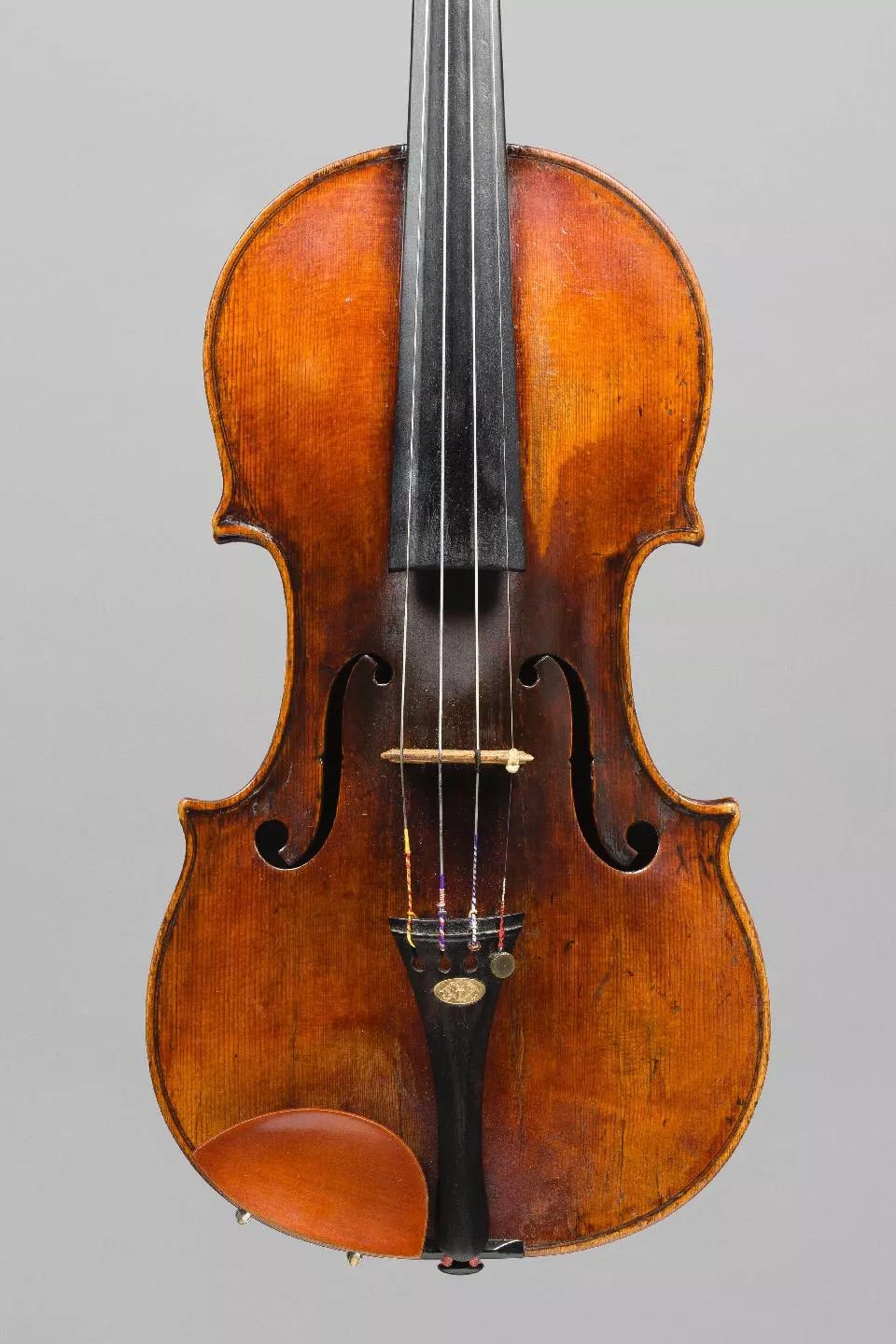
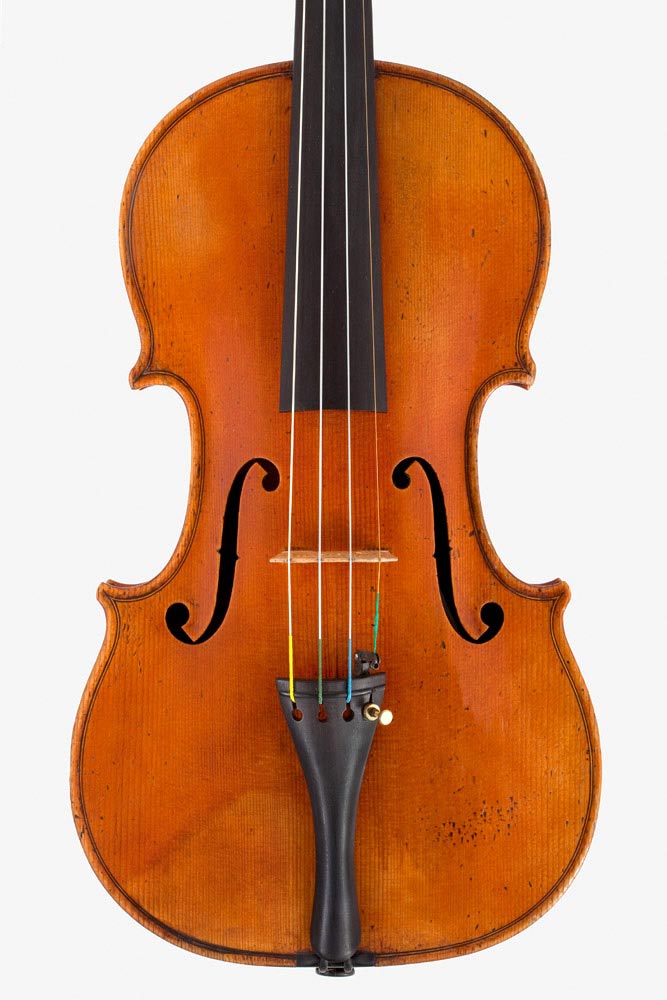
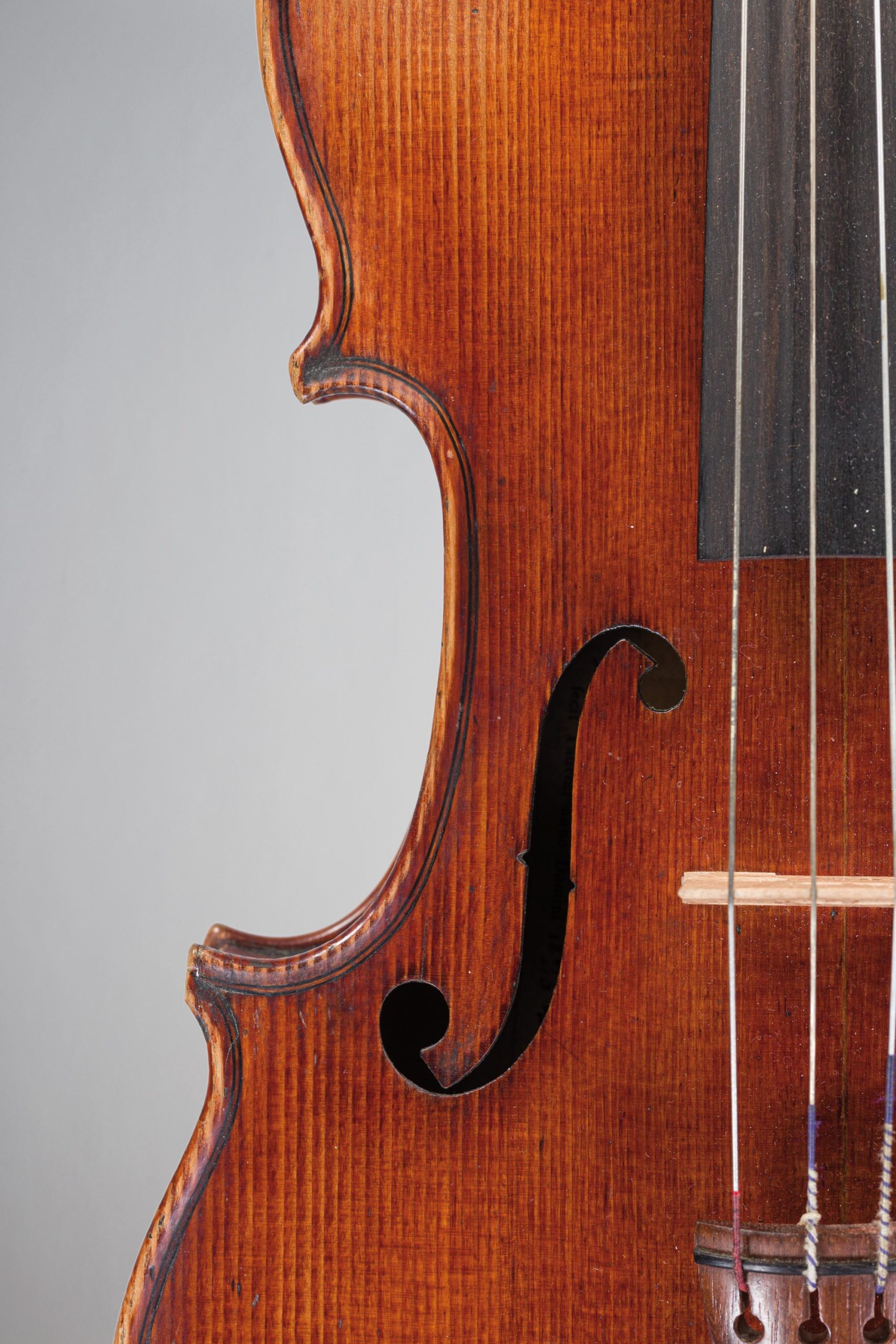
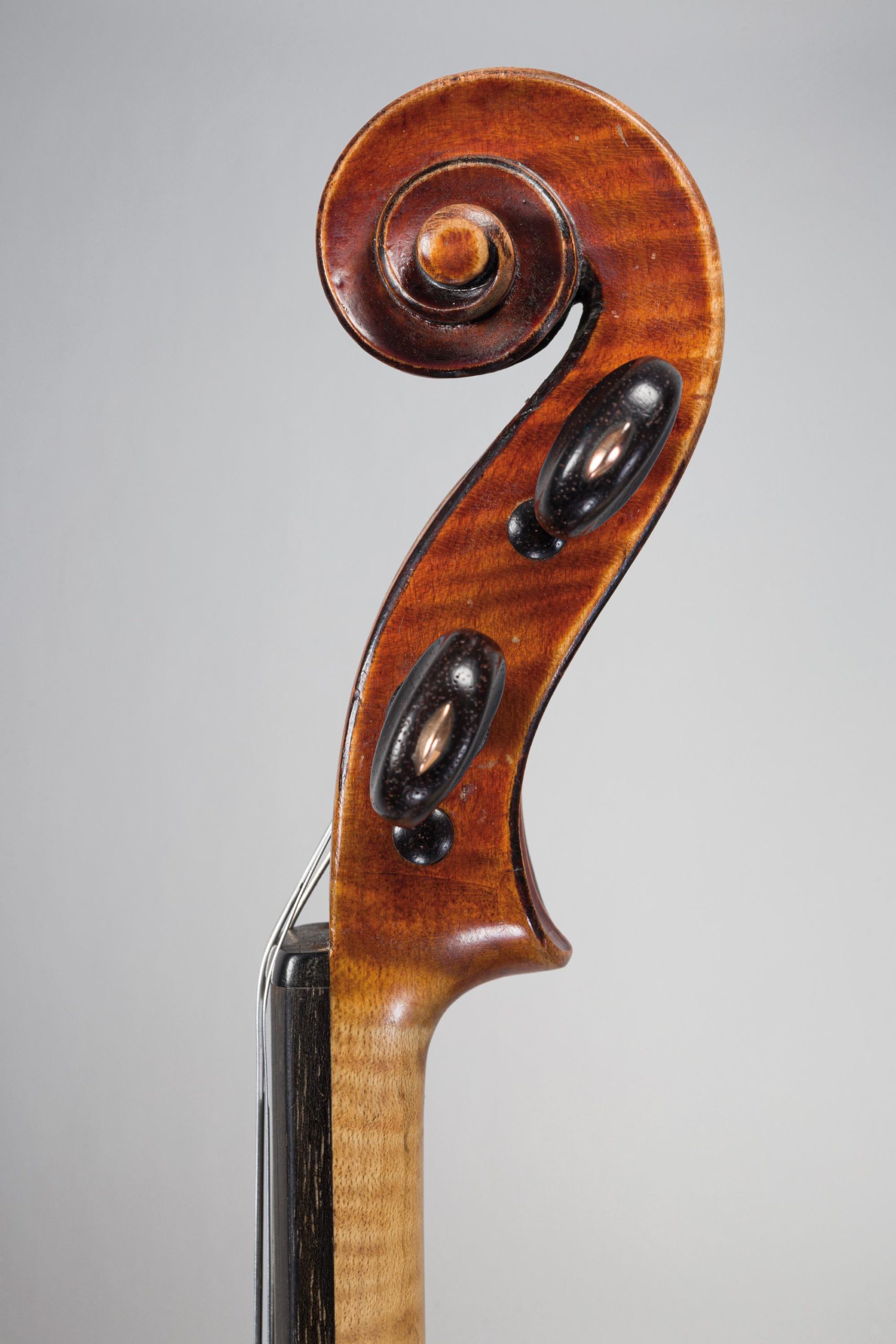
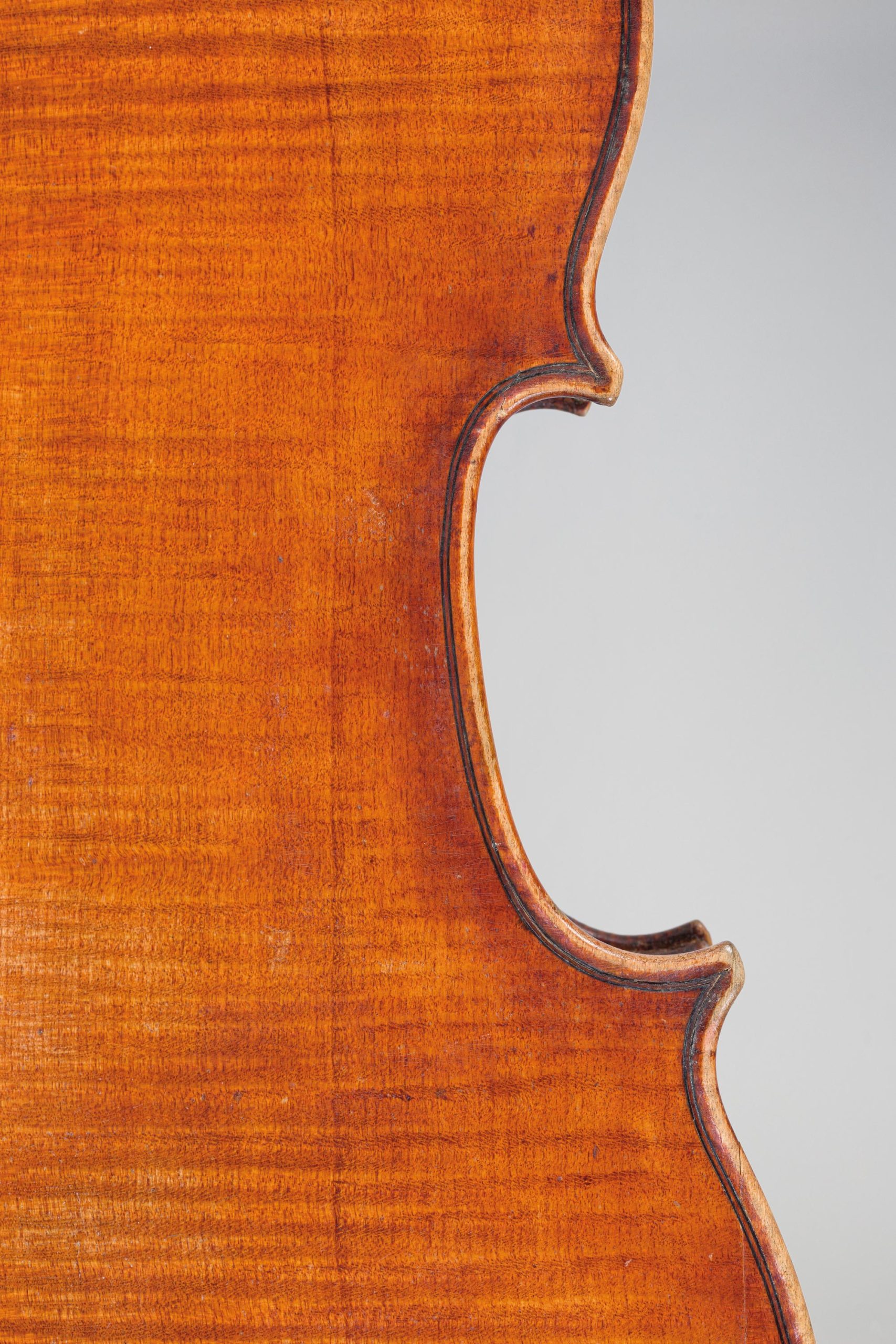
Les instruments de Pressenda se distinguent de la quasi-totalité des écoles italiennes de l’époque, tant au niveau de la facture que du vernis – souvent exceptionnel comme en témoigne cet alto. Ce vernis, doux, riche en texture et en couleur, est l’indéniable marque de fabrique de Pressenda et l’une des caractéristiques les plus appréciées de son œuvre. Par la suite, aucun de ses collaborateurs, apprentis et successeurs, ne parviendra à obtenir ce même vernis. Élaboré durant la première partie de sa carrière, il sera utilisé par le maître quasiment tout au long de son activité.
“Perhaps as a consequence to what he had learnt from Calot, Pressenda was able to produce a type of varnish more in line with those popular in Paris at that time. It was an oil varnish, spread in a few rather thick and very colourful coats.”
Eric Blot, Liuteria Italiana 1800 – 1950, 150 anni di liuteria, 150 years of violinmaking in Piemonte, Piedmont, Vol IV, Eric Blot Edizioni, 2001
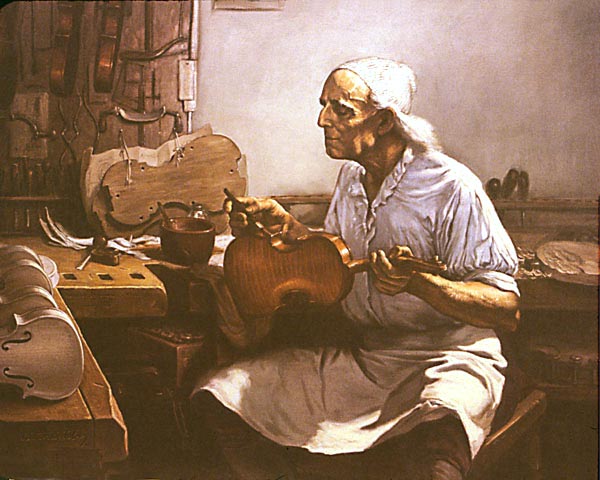
Malgré certaines similitudes avec d’autres écoles, ce type de vernis singularise la production de Pressenda et la différencie de ses contemporains italiens et français. En effet, ce vernis, en raison d’une méthode d’application unique en plusieurs couches épaisses, pénètre souvent dans le bois – le marquant de tâches résultant de l’absorption – et donne un aspect inimitable aux instruments qui gagnent en beauté avec l’usure naturelle du vernis, comme nous pouvons l’observer sur l’alto de la vente Vichy Enchères du 2 juin 2022.
Outre ses qualités historiques, esthétiques et acoustiques, cet alto est remarquable par sa rareté sur le marché. Sur les 95 instruments de Pressenda vendus aux enchères depuis 1998, seuls neuf d’entre eux étaient des altos. La dernière vente d’un de ces modèles remonte à 2014. Ainsi, c’est la première fois en huit ans qu’un alto de Giovanni Francesco Pressenda apparaît sur le marché. Un véritable événement à ne pas manquer, d’autant plus que l’instrument est vendu avec un certificat de garantie de Maucotel et Deschamp !
Enfin, signalons que l’alto de la vente du 2 juin 2022 est très similaire à l’un des rares autres modèles connus, réalisé cette même année 1826, dans le même bois, avec un fond également en une pièce et à deux petits chanteaux. Altos jumeaux, ces instruments mesurent d’ailleurs la même taille.
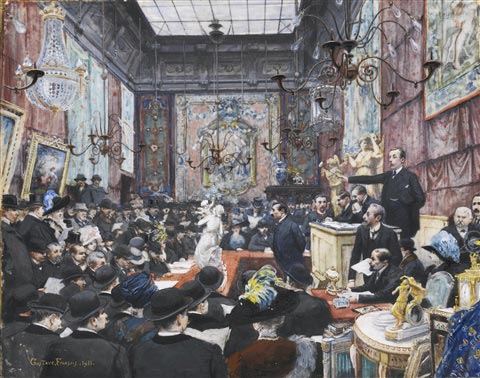

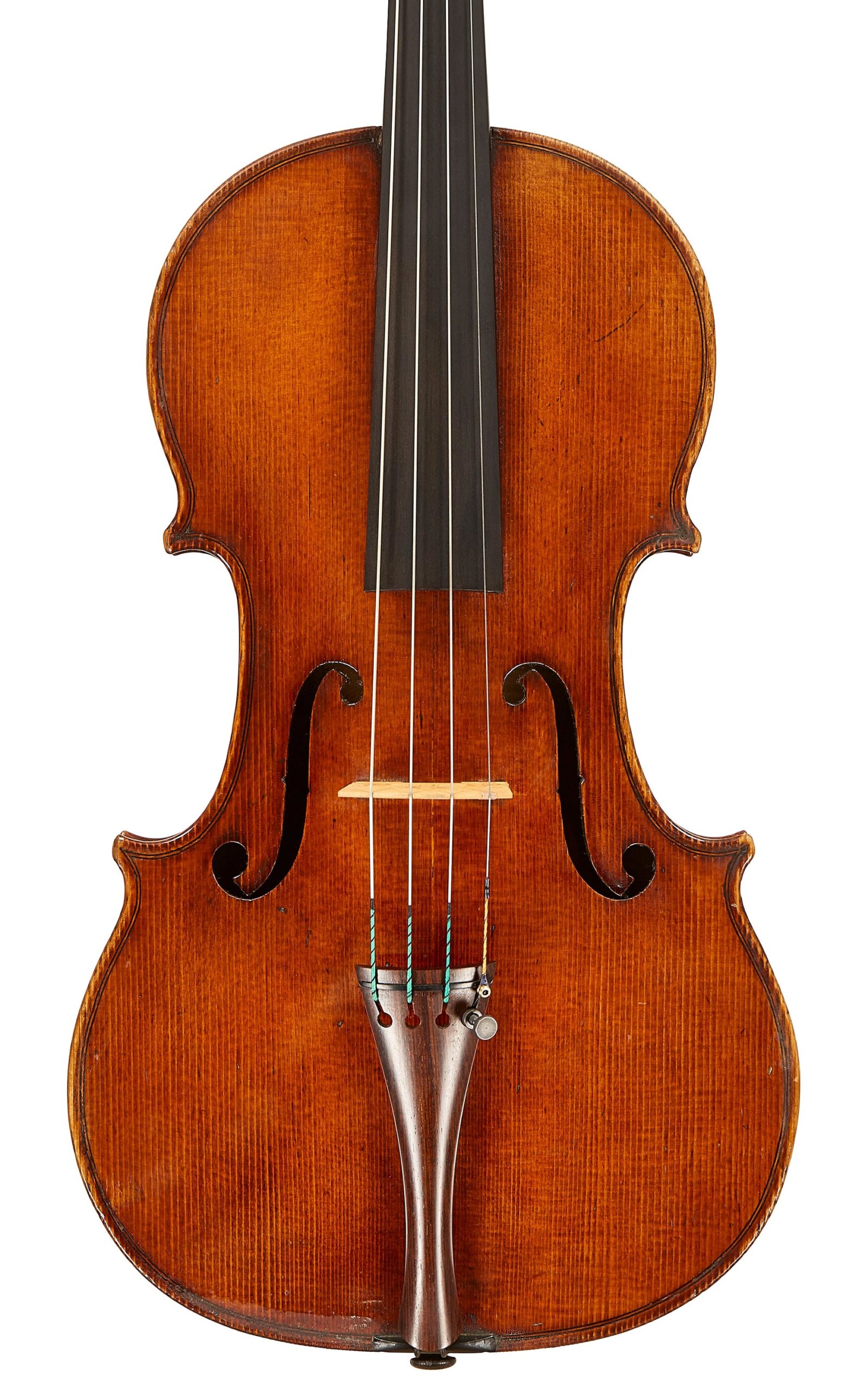
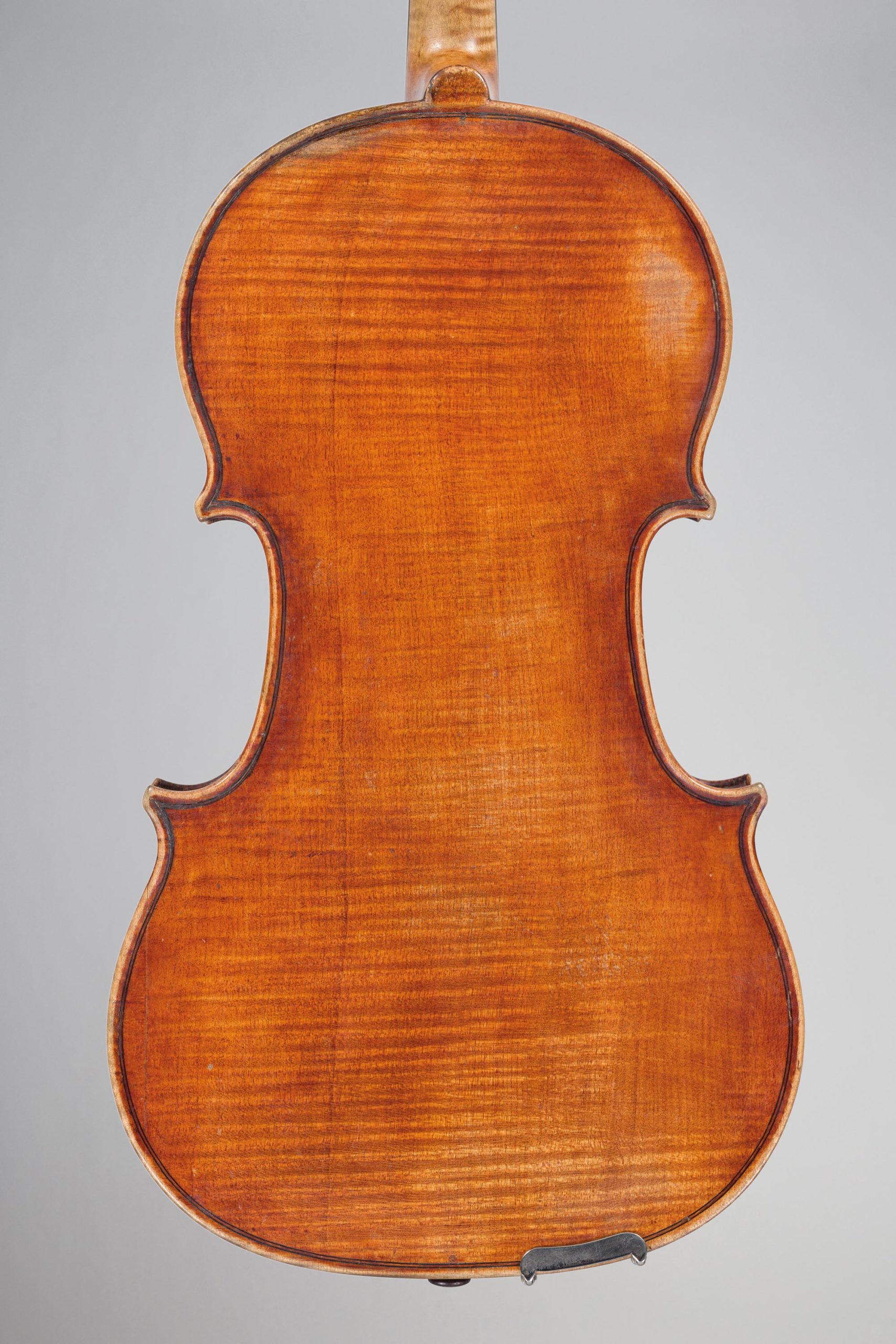
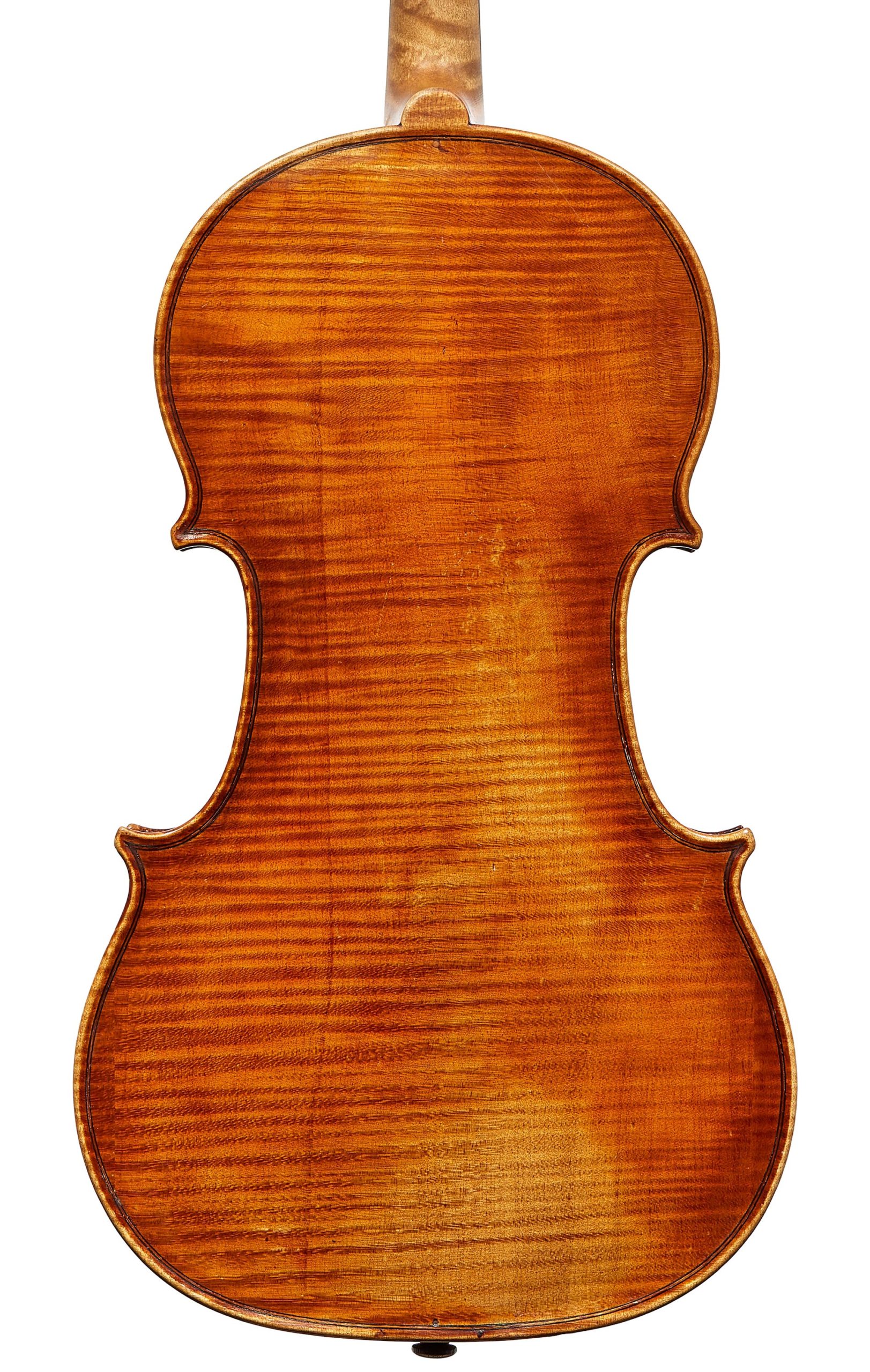
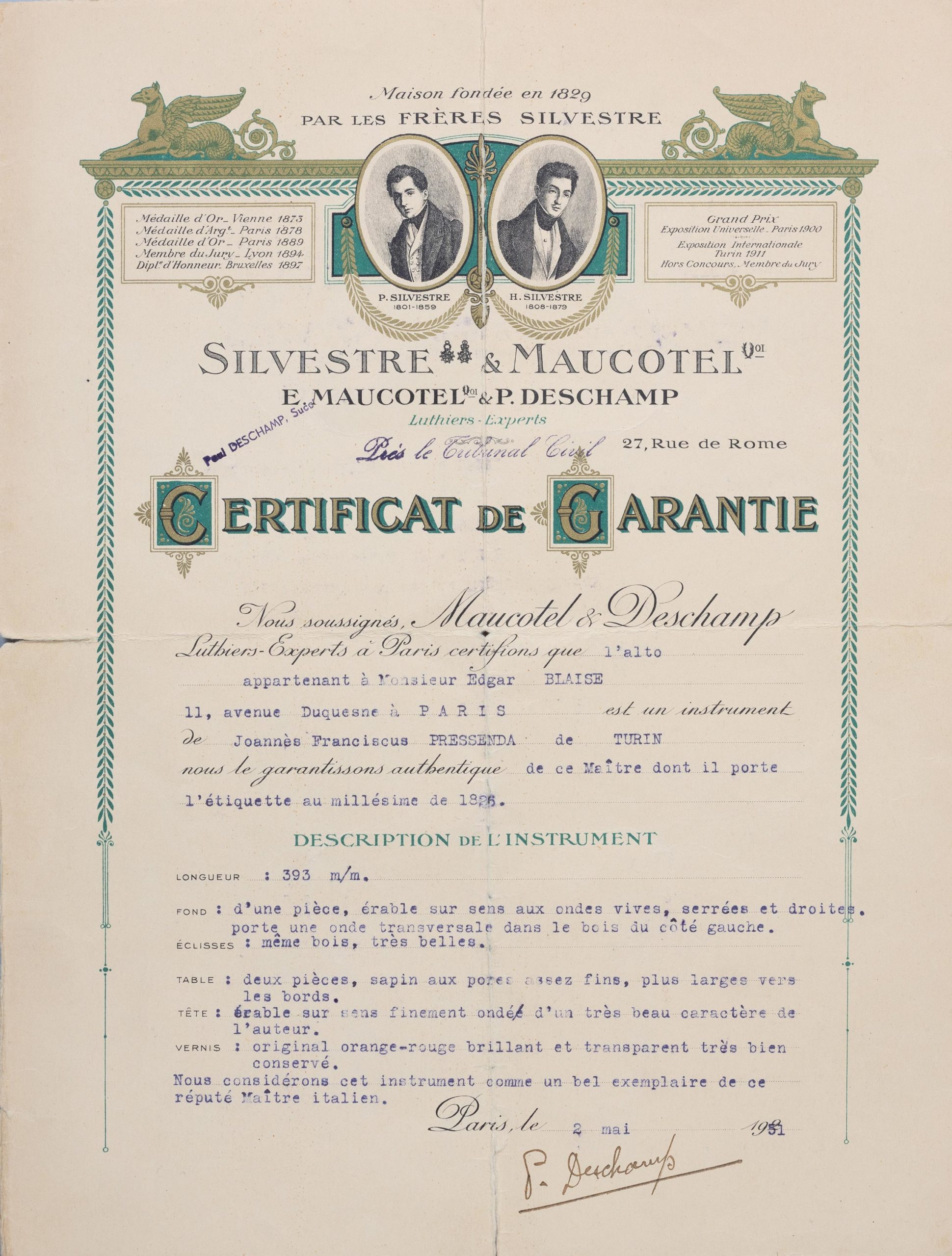
Vichy Enchères vous donne rendez-vous le 2 juin 2022 pour assister à la vente de cet exceptionnel alto d’un des plus grands luthiers de l’histoire – Giovanni Francesco Pressenda – le père de l’école moderne de lutherie de Turin !
Vichy Enchères invites you to discover a remarkable viola by Giovanni Francesco Pressenda. It is a real rarity on the art market: of the 95 Pressenda instruments sold at auction since 1998, only nine were violas. This instrument provides us with an opportunity to revisit the importance of the work of Giovanni Francesco Pressenda, the father of the modern school of violin making in Turin, and to shine a light on his relationships with French makers.

Giovanni Francesco Pressenda is the Piedmontese violin maker par excellence and, for many, the best Italian violin maker of the 19th century. His work gave rise to the modern school of violin making in Turin and has been copied and imitated by several generations of makers since.
Even more than Guadagnini, who only worked in the city during the last period of his life, Pressenda put his mark on violin making in the region by developing a typically Piedmontese style, which quickly spread beyond the regional borders. The Piedmont region became the dominant region in the field of modern Italian violin making and, from the beginning of the 19th century until today, has produced first-class makers, of which the best are probably Pressenda and his pupil Rocca. It is worth noting that at that time, the political, economic and cultural situation in the city of Turin provided a fertile ground for the local musical scene and attracted musicians and makers.
Pressenda was one of them, as he moved to Turin around 1817/1818[1],at the age of 40. Born on 6 January 1777 in Lequio-Berria in Piedmont, he was first a farmer near Alba and probably in Carmagnola. How did he come to violin making? There is no clear answer to this, but it is likely he was first an amateur violinist. It is difficult to retrace his professional career, because historical documents from this period are rare, but he could have trained with Alessandro D’Espine. We know for certain, however, that he worked initially in the workshop of Lété-Pillement, as evidenced by an instrument with a handwritten note by Pressenda on its label, indicating that he revised and corrected the instrument under the supervision of Lété[2]. Following his employment at Lété-Pillement, he set up on his own at n°30 Contrada d’Angennes, where he produced a series of high quality instruments which met with almost immediate success – which was rare at the time.
[1]Umberto Azzolina, Liuteria Italiana dell’ottocento e del novecento, Italian violin making in the eighteen and nineteen hundreds, 1989, editrice Turris Cremona
[2] Eric Blot, Liuteria Italiana 1800 – 1950, 150 anni di liuteria, 150 years of violinmaking in Piemonte, Piedmont, Vol IV, Eric Blot Edizioni, 2001, p60

His fame owes much to the arrival in Turin, in 1823, of the composer Giovanni Battista Polledro (1781-1853), first violin of the Turin Royal Chapel (Cappella Regia) of Carlo Felice, director of the Orchestra of the Teatro Regio until 1844. He took a lot of interest in the work of Pressenda and became one his greatest supporters, promoting the violin maker amongst other musicians, which allowed him to mix in musical circles and establish his position within them. Polledro’s successor, Giuseppe Ghebart (1796-1870) – a violinist, conductor and composer, also became one of his mentors. The support from these two great musicians was decisive, and Pressenda quickly became the most appreciated violin maker in Turin. During their stay in Turin, Polledro and Ghebart resided at 8 Contrada delle Rosine, a stone’s throw from Pressanda’s workshop. They were probably his main customers and referred many musicians to him for the design and manufacture of instruments[1]. The catalogue of the Turin exhibition of 1844, in which Pressenda took part, provides an account of the maker’s success with musicians, and particularly of Ghebard’s admiration:
[1] Informations puisées dans Eric Blot, Liuteria Italiana 1800 – 1950, 150 anni di liuteria, 150 years of violinmaking in Piemonte, Piedmont, Vol IV, Eric Blot Edizioni, 2001
“Our talented professor Ghebard has in his possession some violins of Pressenda, which he would hardly exchange for even the most perfect Stradivarius”
Eric Blot, Liuteria Italiana 1800 – 1950, 150 anni di liuteria, 150 years of violinmaking in Piemonte, Piedmont, Vol IV, Eric Blot Edizioni, 2001, p64-65


Pressenda’s instruments quickly achieved recognition and won multiple awards. During his first participation in the Turin exhibition organized at the Valentino castle in 1829, he received a bronze medal for his remarkable work, both for the quality of his instruments and for the breadth of his craftsmanship. When he exhibited again in 1832, he was again awarded the bronze medal he won at the previous edition of the competition, and this time with even more enthusiasm as his instruments were, for the first time, compared to those of the Cremonese masters – which were considered to be the ultimate reference.
“[he] exhibited a violin and a cello with an interesting oil varnish following in the tradition of the classical instruments of Cremona. The Regia Camera declares Francesco Pressenda to be even more deserving of the bronze medal he was awarded in 1829 for his excellent work and the renowned fine quality of his instruments.”
Eric Blot, Liuteria Italiana 1800 – 1950, 150 anni di liuteria, 150 years of violinmaking in Piemonte, Piedmont, Vol IV, Eric Blot Edizioni, 2001, p64
During the Turin exhibition of 1838, he exhibited two violins and a viola and won the silver medal. The note accompanying the award confirmed Pressenda’s reputation in Italy and abroad, and described him as a worthy heir to the Cremonese masters:
“For the solid reputation that Gian Francesco Pressenda so deservedly acquired at home and abroad, as heir to the skill of the ancient Cremonese craftsmen in string instrument making, and for the fine quality of the instruments he has exhibited, The Camera Regia thus awards him with a silver medal.”
Eric Blot, Liuteria Italiana 1800 – 1950, 150 anni di liuteria, 150 years of violinmaking in Piemonte, Piedmont, Vol IV, Eric Blot Edizioni, 2001, p64
At the last two exhibitions in which he participated, in 1844 and 1850, he obtained the silver medal and the golden silver medal respectively. In all, Pressenda therefore took part in the Turin exhibitions of 1829, 1832, 1838, 1844 and 1850, and each time was presented with ever higher awards and medals.


If Pressenda is considered the father of modern violin making in Turin, it is because he developed a model of instrument typical of the city. The Pressenda model is inspired by those of Stradivari and Guarneri del Gesù, whilst creating a new form reflecting his own ideas of the perfect instrument. The modello Pressenda is therefore very personal and is distinguishable by its full and clean shapes, which never become heavy – note the powerful and elegant scroll of the viola in the sale of 2 June 2022, and by the choice of wood, which is of great beauty and excellent acoustic quality. Towards the end of 1834, Pressenda hired Giuseppa Rocca, and he became his most brilliant apprentice and worthy successor. Rocca made instruments on the Pressenda model, and therefore some of his instruments are practically identical to those of the master.
However, one of the makers most influenced by the Pressenda model was probably Annibale Fagnola (1866-1939), who made several beautiful copies based on it after settling in Turin in 1894. Vichy Enchères sold several Fagnola instruments recently, as for instance a beautiful violin made in 1922 on a Pressenda model, complete with a facsimile of the master’s label inside the instrument.
The modello Pressenda was taken up by generations of makers in its wake and continues to seduce musicians and makers around the world today. During the sale of 2 June 2022, two other instruments from Turin makers will provide an insight into this school: a violin by Enrico Melegari from 1891 and another by Enrico Marchetti from 1917.






Although we know very little about the life of Giovanni Francesco Pressenda, certain facets of his personality shine through in his instruments – and particularly his labels, since an annotated element on them makes them stand out. Indeed, Pressenda used two types of labels, which differ in their graphic ornamentation, but retain the same Latin text: “Joannes Franciscus Pressenda q. Raphael / fecit Taurini anno Domini 18xx”. The mention “q. Raphael” means “quondam Raphaelis”, meaning “son of the late Raphael”. This wording was used in public documents and official acts, but was unusual in instrument labels[1]. Therefore, these labels seem to reflect the importance that Pressenda’s father could have had in his personal and professional life, since it is an unusual tribute that leads to questions about the father’s activity. Was Raphael Pressenda also a maker and did his name speak to the musicians of the time? According to the few historical documents available, he would have indeed been involved in the musical life of his time, as a popular violinist. It was probably by seeing his father play the violin – and perhaps also adjusting some of them – that Pressenda became interested in the instrument and in violin making.
[1] Eric Blot, Liuteria Italiana 1800 – 1950, 150 anni di liuteria, 150 years of violinmaking in Piemonte, Piedmont, Vol IV, Eric Blot Edizioni, 2001
Another theory is that G. F. Pressenda mentioned the name of his father on his labels to give the fictitious impression that he was part of a long family tradition of violin making, in order to give historical depth to his instruments. Regardless, the mention of his father on his labels is quite unusual and attests to a certain filial devotion.

During the first part of his career, Pressenda was influenced by French violin making, which can be explained in particular by his tenure in the Turin workshop of Lété-Pillement – these two families of makers from Mirecourt. Within the workshop, Pressenda learned the French construction methods and became familiar with the form then in vogue in France. In particular, he used the inside mould of the French and not the Cremonese one[1]. At Lété-Pillement, he worked on guitars, organs and violins and learned from his French colleagues the techniques used in Mirecourt at that time, which he would later apply to his own instruments[2] – as demonstrated by the viola in the sale of 2 June 2022. This instrument is inspired by the Mirecourt interpretation of the Stradivari model, in particular in the design of the square arches and the appearance of the varnish. In addition, as experts Jonathan Marolle and Jean-Jacques Rampal note, the bottom saddle is set in the rib, which is typical of what was done in Mirecourt at that time.
Later on, Pressenda collaborated with several other makers from Mirecourt, including Joseph Calot and Pierre Pacherel. The latter probably made parts, such as scrolls of f-holes, for his instruments. More than mere colleagues, Calot and Pacherel were real friends of Pressenda, who was godfather to Calot’s daughter in 1827 and best man at Pacherel’s wedding in 1829 – alongside Léopold Noiriel, probably another of his colleagues[3]. In its form and proportions, the Pressenda viola is indeed close to the work of these French masters.
[1] Eric Blot, Liuteria Italiana 1800 – 1950, 150 anni di liuteria, 150 years of violinmaking in Piemonte, Piedmont, Vol IV, Eric Blot Edizioni, 2001
[2] Ibid
[3] Ibid





Pressenda reached his first mature period around 1825-1826, when this viola was made. The style of this period combines French and Italian influences and therefore the corresponding instruments display elements of both these schools. As a result, Pressenda’s work stands out from that of almost all other Italian makers of the time, especially since the Piedmont region had no real local tradition of violin making. On the Italian side, the instruments of Pressenda are closely inspired by Stradivari and Guarneri, but without being exact copies. The outlines are more masculine and wide, with rounder shoulders and bolder arches, especially near the bridge.
The viola in the 2 June 2022 sale is influenced by the Stradivari pattern and the whole instrument has been executed with a unique balance of proportions, so that the instrument displays a remarkable combination of strength and grace. This new model set the standards of Pressenda’s personal style. He retained a sense of freedom and originality throughout his life, and did not subject himself to the dictates of a specific school. This viola also reflects his keen eye for detail and his refined and accomplished craftsmanship. It attests to the strong personality of its maker and is typical of the first years of the master.
It is an interesting viola, including from an acoustic point of view, and is the type of instrument that would have seduced the great musicians of the time, such as Polledro and Ghebart, his mentors. It should also be noted that Pressenda was very demanding in the choice of his timber and that it was probably supplied by French merchants, including Thiriot[1]. ]. In addition, his instruments are distinguishable by their purfling, usually of ebony, finely inlaid in deep and precisely cut grooves. The scrolls are deeply hollowed out, with blackened chamfers in the manner of the Cremonese makers. The button is large, and the chamfer at a very slight, almost flat, angle.
With the exception of a few details, this model did not change for the rest of his career. From 1829-1830, the corners became thinner, narrower and more triangular in shape, whilst the curve of the C-bouts was softened and the f-holes elongated.
[1] Eric Blot, Liuteria Italiana 1800 – 1950, 150 anni di liuteria, 150 years of violinmaking in Piemonte, Piedmont, Vol IV, Eric Blot Edizioni, 2001





Pressenda’s instruments differ from almost all instruments of the Italian schools of the time, both in terms of craftsmanship and varnish – which is often exceptional as this viola demonstrates. This varnish, soft and rich in texture and colour, is the undeniable trademark of Pressenda and one of the most appreciated aspects of his work. After him, none of his colleagues, apprentices and successors managed to reproduce this varnish. Developed during the first part of his career, it was almost always used by the master from this point on.
“Perhaps as a consequence to what he had learnt from Calot, Pressenda was able to produce a type of varnish more in line with those popular in Paris at that time. It was an oil varnish, spread in a few rather thick and very colourful coats.”
Eric Blot, Liuteria Italiana 1800 – 1950, 150 anni di liuteria, 150 years of violinmaking in Piemonte, Piedmont, Vol IV, Eric Blot Edizioni, 2001

Despite certain similarities with those of other schools, this type of varnish sets Pressenda apart from his Italian and French contemporaries. Indeed, this varnish, due to a unique method of application in several thick layers, often penetrated into the wood – leaving stains resulting from the absorption of the varnish by the wood fibres – and gives an inimitable appearance to his instruments, which gain in beauty with the natural wear of the varnish, as can be witnessed with the viola in the Vichy Enchères sale of 2 June 2022.
Besides its historical, aesthetic and acoustic qualities, this viola is remarkable for its rarity on the market. Of the 95 Pressenda instruments sold at auction since 1998, only nine were violas. The last sale of an instrument of this type dates back to 2014. It is therefore the first time in eight years that a viola by Giovanni Francesco Pressenda has appeared on the market. It is a real event not to be missed, in particular since the instrument is accompanied by a certificate of authenticity from Maucotel et Deschamp!
Finally, please note that the viola in the sale of 2 June 2022 is very similar to one of the rare other known models, made that same year of 1826, from the same wood, with a back also in one piece and with two small chanteaux. These twin violas are also the same size.






Vichy Enchères invites you on 2 June 2022 to attend the sale of this exceptional viola by one of the greatest violin makers in history – Giovanni Francesco Pressenda – the father of the modern school of violin making in Turin!